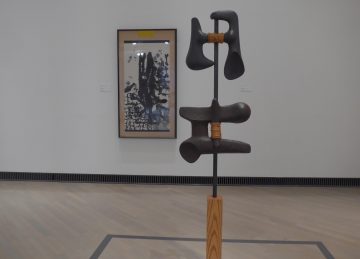Magcal Report in TPAM 2014 / TPAM Direction, Masahiro Ohira Direction

What is TPAM Direction?
Young creators engaged in unique activities have been appointed as directors, and the program will be created with original concepts and new perspectives.
This will be an opportunity to share contemporary ideas and challenges through each other's direction and to consider together the possibilities of performing arts.
/////////////////////////////////////////////////// //////////////////////////// /////////////////////////////////////////////////// ////////////////////////////
Direction by Masahiro Ohira
"Kim Itoh x Zan Yamashita"
Yokohama ST Spot
2.11(Tue) - 2.13(Thu)
The "Kim Itoh x Zan Yamashita" performance was held at Yokohama ST Spot.
The venue was furnished with wooden panels and stepladders, and Kim Itoh was the only performer.
As the performance began, Kim Itoh moved slowly and quietly, and addressed the audience in a matter-of-fact manner, as if she was carefully choosing her words. It was more accurate to say that she was "explaining" something to the audience rather than speaking to them.
He explains his own memories (whether or not they are true stories) and a series of problems occurring in society, such as the Twitter issue, the food fraud scandal, and the Ospreys in Okinawa, but suddenly the ladder begins to speak to him.

"What is your occupation?"
Although Ito explains to Stepladder that she "does dancing," she is unable to properly explain what she means by "dance" in terms of a category like "JAZZ" or "HIPHOP," so she actually dances to explain it with her body.
Suddenly, a question that could not be clearly put into words was asked in the middle of the flow of explanation that had been going on up until that point, making everything that had been explained up until then seem like information with no guarantee, and it seemed as if the ladder was telling us, through its interaction with the ladder, that "everything in this world cannot be put into words."
Also, as the play progresses, Ito's lines gradually include more and more words like "this" and "that."
What exactly it refers to is merely our imagination as viewers, and I believe that all viewers who are watching can share an understanding of what "this" and "that" refer to when pictures are drawn on panels or seen visually, but this is merely our own imagination and interpretation, and there is no guarantee that it is absolute.
At the end, the story turns to the draining of the pond in Inokashira Park, and there is a line that says, "It looks like about 200 units of something came out."
That "something" is probably the illegally dumped bicycle that was in the news, but Ito-san keeps referring to it as "that" until the very end.
"I want the act of dumping it in the pond to be the final scene of the film."
Then he nominated someone from the audience to throw away "that" with him, and to my surprise, I was chosen and we ended up throwing "that" together.
The two throw away the panel with what appears to be a bicycle, and the performance ends with the sound of rushing water.
What on earth was that?
Was it really a bicycle?
Maybe I have done something even more cruel in my shame.
If you think about it that way, the talking stepladder wasn't called a "stepladder."

"Was that a stepladder?"
When you think about it like that, you realize that "words" are more formless than you might think, but they exist within us as "images," and that they have the danger of being transformed into various meanings. And how we tend to believe too much in what we see in front of us.
I felt like this performance provided an "explanation" that warned of such dangers.



